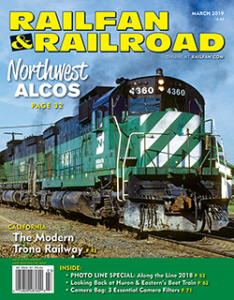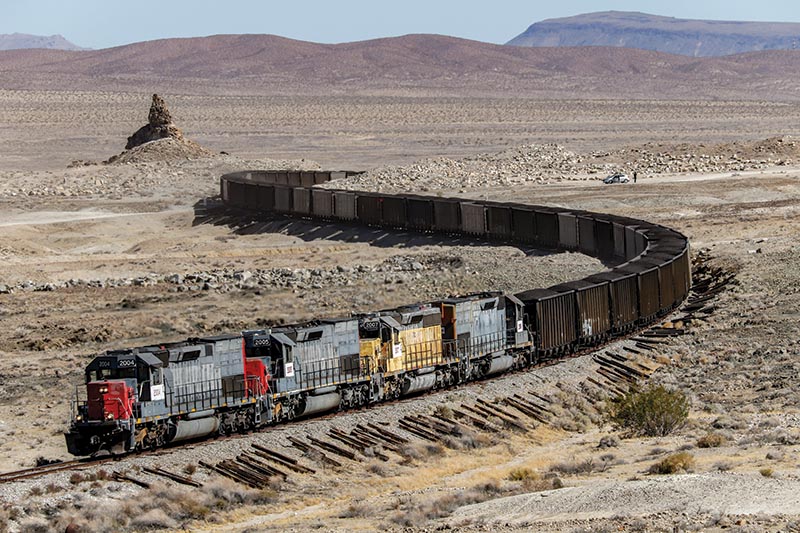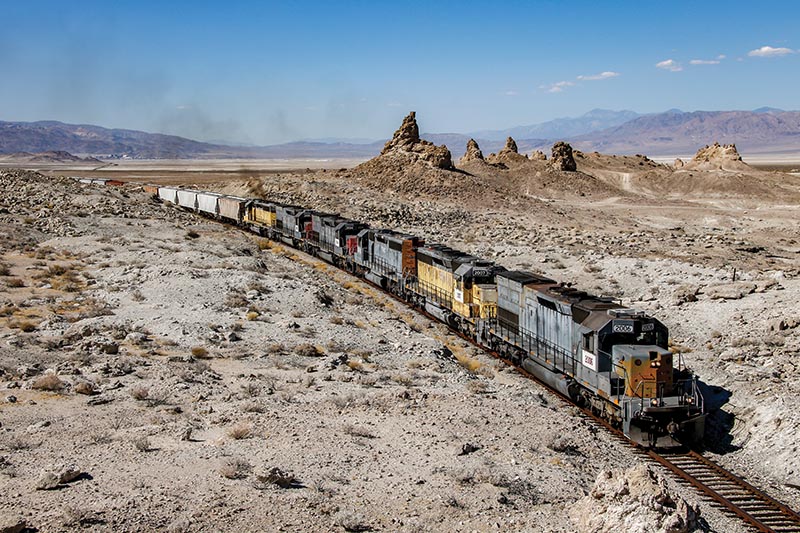 By Zachary Larsen/photos by the author
By Zachary Larsen/photos by the author
The expanses of the Searles Valley, a far-flung region of Eastern California deep in the Upper Mojave Desert, are a stark reminder of the lifestyle that was once prevalent in the region prior to the invasion of interstates, convenience stores, and outlet centers. Turning around the final bend on the aptly named Trona Road before arriving in town, the first and most prominent thing that comes into view is the massive Searles Valley Minerals (SVM) facility that dominates the north end of the valley. The complex, a maze-like conglomeration of buildings and railroad tracks, sits prominently above the entirety of the community, harkening back to the halcyon days of Trona’s importance in the region.
Driving through Searles Valley is a bit like stepping back in time to an era when the phrase “company town” carried significant weight across large swaths of rural America. Despite the huge changes in the world over the past several decades, not much has changed here, save for whose company logo is displayed on the welcome sign along California Route 178. And for all intents and purposes, not much else will.
“It’s a lot like Groundhog Day,” Mark Bennett, manager of the Trona Railway Company (TRC), jokes when asked about the future of his railroad. Aptly, a few photos of Punxsutawney, Pa., hang on the wall of his office, and, like the Bill Murray movie of the same name, operations in the valley seem to be, in a sense, timeless. With seemingly limitless mineral deposits contained within the Searles Lake playa and the need for soda ash remaining constant, the SVM facilities at Trona and the railroad that serves it will most likely remain in operation far into the future, as unchanged as the bleak yet stunning environment that surrounds them.

Trona Railway 2004 and three fellow SD40s drift downgrade with dynamic brakes howling as they curve through the timetable location of Pinnacles, with one of the iconic spires standing in relief against the distant hills of the upper reaches of Searles Valley on July 10, 2016.
Even though California may not be the first state that comes to mind when heavy mining is mentioned, the Mojave has a rich history of companies making their mark on the landscape. While much of this mining legacy has faded, companies focused on extracting mineral wealth have persisted due to a never-ending demand for resources used for a variety of industrial purposes. SVM, which has owned the facilities in Trona since late 1990, is just the latest in a century-old series of companies that have extracted the rich mineral wealth found within the valley. Like many of the dry lakebeds that line the Eastern Sierra, the basin at Searles Valley has accumulated millions of years of runoff from the neighboring Sierra Nevada which resulted in deposition of seemingly limitless amounts of soda ash, sodium sulfate, and sodium borate.
Seven days a week, SVM’s crews mine the lakebed for these valuable mineral compounds, which are destined for customers both domestic and abroad. The minerals are pumped out of the lakebed as a brine solution that is sent to one of three production complexes: Westend, two miles south from Trona; Argus, which lies on the north side of the facility; and Trona, which sits on the south side. Each plant receives a different product extracted from the lake, which has settled into distinct layers rich in specific compounds. Upon receipt at their respective plants, the product is removed from the brine, dried, refined, and sorted into railcars for delivery. From arrival in the plant to loadout into a railcar, the process takes about 18 hours on average…



